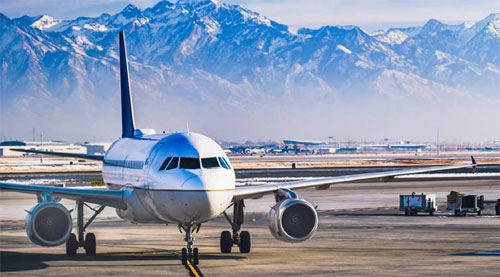Brice Wallace
This isn’t your grandfather’s Utah anymore. Or your father’s. Or even the Utah you have known in your own lifetime.
That was the point of a presentation made to the Utah Economic Opportunity Commission during a recent meeting, when Natalie Gochnour, director of the University of Utah’s Kem C. Gardner Policy Institute, told the commission that notions that some people have about Utah may no longer be accurate.
Not long ago, Utah was a small-population state that relied on{mprestriction ids="1,3"} births for growth, had a young population that was monocultural, and featured a strong economy. Now it is mid-sized with a population that is more multicultural and older, and its growth has come from outsiders moving in. The state also has seen its economy become “elite,” Gochnour said.
“The thing is, if you sit close to data, if you have the view that I have as someone who leads a policy institute, Utah’s hit an incredible inflection point. … We’re actually facing a new Utah,” she told the commission.
All of the five elements she listed for the “new Utah” have economic implications, she added.
As for overall population, Utah for several decades was No. 34 among states but has risen to No. 30.
“That’s really revelatory,” Gochnour said. “It brings you more direct flights. It brings you international flights. It brings you more major-league sporting opportunities. But it also brings you congestion and expense and some of the difficult things.”
Meanwhile, Utah has become “a magnet for migration,” she said. Migration accounted for one-third of the state’s population growth in 2000-2020 but now it’s 62 percent. The state’s fertility rate has been dropping for many years, having plummeted during the Great Recession and not recovered.
“Interestingly, as housing becomes less affordable, that’ll stop people from coming,” she said of in-migration. “I think there’s things that will moderate it, but do I think that we’re primarily an internal-growth state for the next decade? I don’t think so.”
Utah will remain a youthful state relative to the rest of the country, but the population in 2020 had 11.5 percent that were 65 or older, a figure expected to reach 20 percent in 2050. The school-age population is entering an era where it will decrease, and the college-age population also will have periods of decline, she said.
“That changes housing, transportation, healthcare, changes the structure of your economy — a big, big deal,” Gochnour said of the overall aging population.
For example, more people will need to be trained to help people with their healthcare needs. Transportation will need to be improved to get those people to their healthcare providers. Technology will need to advance to help with those treatments.
“It’s been an advantage for us, in my judgment, to be a youthful state,” Gochnour said. “Young states are tech-savvy. Young states are inexpensive for healthcare-cost reasons. Young states are typically rapid-growth. A rapidly growing labor force attracts companies to come here. So I think we lose a competitive advantage if we’re not as youthful.”
Utah’s population was 10 percent minority in 1990, but that ballooned to 28 percent in 2020 and it’s expected to increase to more than 30 percent in 2040. Utah is more diverse than Ohio, Indiana, Missouri, Minnesota and Wisconsin, she said.
That change means policymakers might need to address educational matters. Generally, student achievement is relatively good for Asians and whites, but other ethnicities have education issues.
As for Utah’s economy, it once was strong but experienced ebbs and flows, but now its job growth is consistently at the top among states, plus Utah demonstrated considerable strength relative to other states during the pandemic, Gochnour said.
Asked about industries expected to grow, Gochnour said it is “a completely moving target.”
“Two years ago, the answer would have been the tech sector. Today, the manufacturing sector is stronger than it used to be. It changes with the business cycle and with the trends. But I would make a general observation that in a well-diversified economy like Utah’s, we’re getting it across the board,” she said.
Armed with all of that information, policymakers need to focus on how the state grows and maintains the distinctive features that its people value, as well as how to help all Utahns to thrive, she said.
“People need to understand the new Utah that we are today, and I think communication is a part of that,” she said.
“We have to help people understand that these changes are beyond our control, they’re irreversible, it’s the future of our state. It’s been our past and it’s our future, so we’d better face reality with it.”{/mprestriction}








